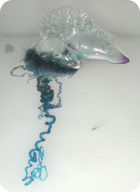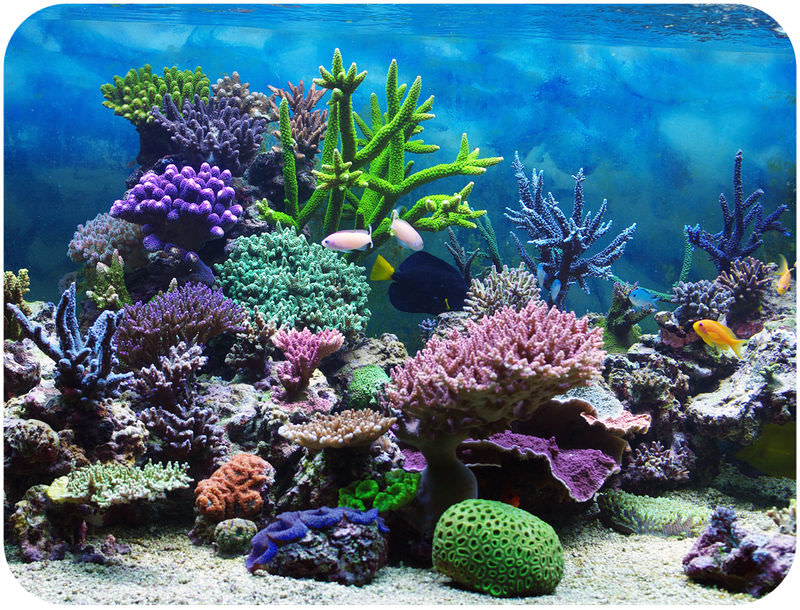9.3: Cnidarians
- Page ID
- 2944
Are corals animal, plant, or mineral?
Some corals may look like rocks. But they are alive! And some corals may look like plants, but they are actually animals. Just like all other animals, they eat food to get energy.
Cnidarians
Cnidarians, in the phylum Cnidaria, include organisms such as the jellyfish, corals, and sea anemones. These animals are found in shallow ocean water. You might know that these animals can give you a painful sting if you step on them. That’s because cnidarians have stinging cells known as nematocysts. Cnidarians use nematocysts to catch their food. When touched, the nematocysts release a thread of poison that can be used to paralyze prey. Cnidarians are among the simplest of the so-called "higher" organisms, but are also among the most beautiful.
Body plan
The body plan of cnidarians is unique because these organisms show radial symmetry, making these animals very different from those that evolved before them. Radial symmetry means that they have a circular body plan, and any cut through the center of the animal leaves two equal halves.
The cnidarians have two basic body forms:
- Polyp: The polyp is a cup-shaped body with the mouth facing upward, such as a sea anemone and coral.
- Medusa: The medusa is a bell-shaped body with the mouth and tentacles facing downward, such as a jellyfish.
Unlike the sponges which evolved prior to cnidarians, the cnidarians are made up of true tissues. The inside of a cnidarian is called the gastrovascular cavity, a large space that helps the organism digest and move nutrients around the body. The cnidarians also have nerve tissue organized into a net-like structure, known as a nerve-net, with connected nerve cells dispersed throughout the body. Cnidarians do not have true organs, however.
Reproduction is by asexual budding (polyps) or sexual formation of gametes (medusae, some polyps). The result of sexual reproduction is a larva, which can swim on its own.
Cnidarian Colonies
Some types of cnidarians are also known to form colonies. Two examples are described below.
- The Portuguese Man o' War (Figure below) looks like a single organism but is actually a colony of polyps. One polyp is filled with air to help the colony float, while several feeding polyps hang below with tentacles. The tentacles are full of nematocysts. The Portuguese Man o' War is known to cause extremely painful stings to swimmers and surfers who accidentally brush up against it in the water.

- Coral reefs (Figure below) look like big rocks, but they are actually alive. They are built from cnidarians called corals. The corals are sessile (non-moving) polyps that can use their tentacles to feed on ocean creatures that pass by. Their skeletons are made up of calcium carbonate, which is also known as limestone. Over long periods of time, their skeletons build on each other to produce large structures known as coral reefs. Coral reefs are important habitats for many different types of ocean life.
Corals are colonial cnidarians.
Summary
- Cnidarians have radial symmetry and true tissues.
- Some cnidarians form colonies, such as corals.
Explore More
Use the resource below to answer the questions that follow.
Explore More I
- Cnidarians: Life on the Move at vimeo.com/37267733 (14:44)
- How do cnidarians move?
- Why was movement a useful innovation for cnidarians?
- What is a nematocyst? For what purpose(s) are they used?
- What allowed cnidarians to swim the world's oceans?
Explore More II
- Cnidarians: Moon Jelly Life Cycle at vimeo.com/40232821 (3:15)
- How do polyps differ from medusas?
- Describe the mating of moon jellies.
Review
- What are three examples of cnidarians?
- What is an nematocyst? What does it do?
- Distinguish between the two body plans of a cnidarian.
- How is a jellyfish different from a Portuguese Man o’ War?


